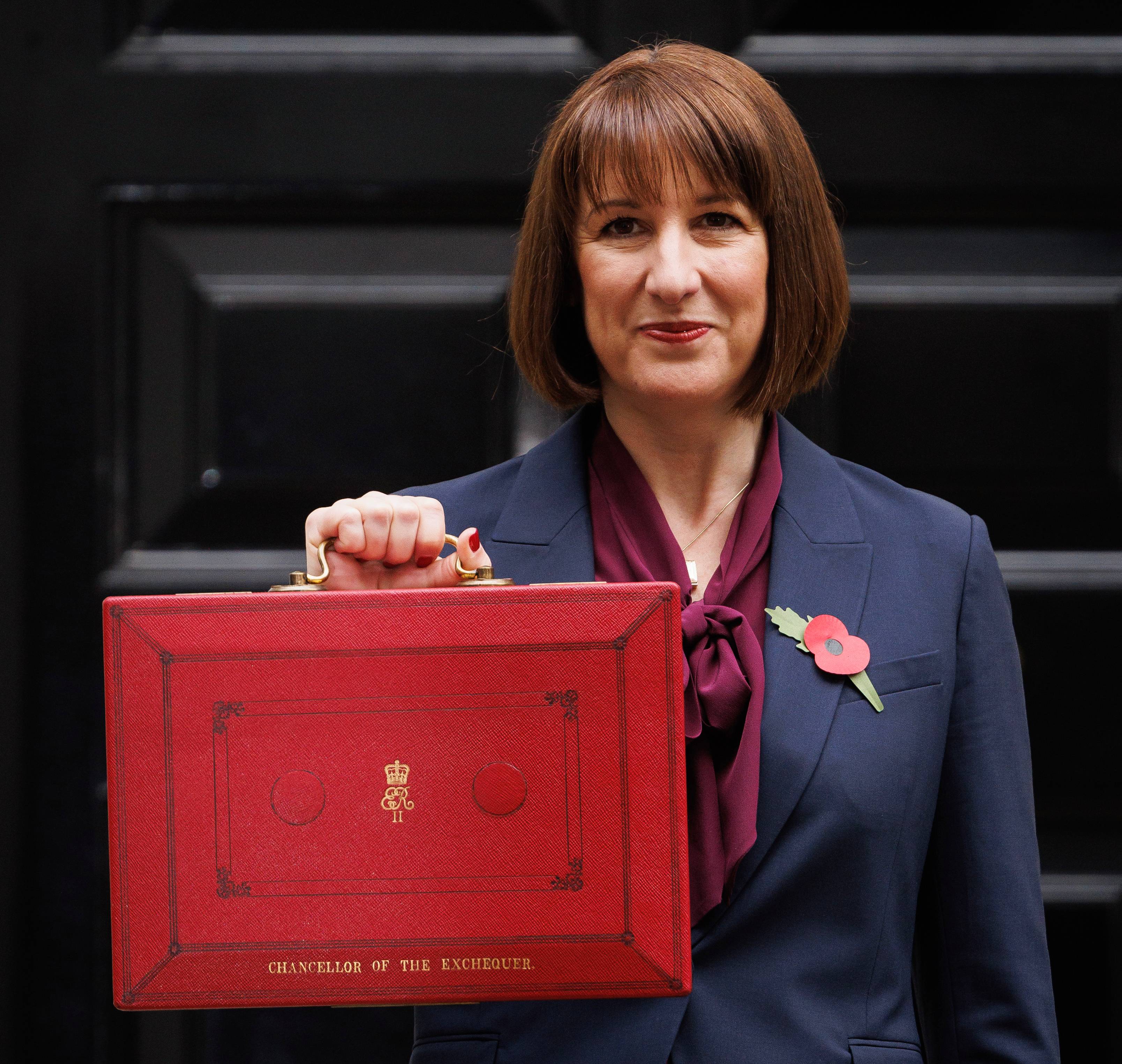Quarterly Investment Update: Steady on, with a weather eye on the horizon
Still no clear sign of recession in the months ahead, but no catalyst for fears to subside yet either.

Article last updated 22 July 2025.
In the penultimate week of June, the global equity market enjoyed its seventh largest weekly gain in 10 years. Of course, the largest weekly gains almost invariably come not long after the largest falls (equities are still below water for June), when the risks remain highly elevated.
Our base case remains that core inflation will fade back to normal levels in the second half of 2023, and that there will be no global recession in the next six to 12 months, which is important for financial market prospects. Yet we are seeing more ‘yellow flags’ in the data than when we wrote our last InvestmentUpdate in mid-May. We are particularly concerned about the rising risk of winter gas rationing in Europe.
The narrative seems to be shifting from a preoccupation with ever-increasing inflation, interest rates and the possibility of stagflation, to overriding concerns about weak or even negative growth and the possibility that tougher, front-loaded action by the US Federal Reserve (Fed), will end up cooling down the economy by far too much. In other words, the best ‘cure’ for high prices may well be high prices, as the adage goes. In fact, the implied rate of inflation priced into both US and UK inflation-protected government bonds has fallen by nearly a percentage point from its peak. Medium-term market-based expectations are back to their pre-COVID norm. After a long run of upward revisions, investors are now pricing in two US rate cuts starting in May 2023, which would be less likely if stagflation was to take hold.
In our May Update we said that we hoped we had seen the bottom, but that we could not say for sure. That’s because we were at least a couple of months away from the catalysts for fears to subside around inflation, how far central banks may go in raising interest rates and the risks that they could thereby induce recession, and the implications of the war in Ukraine. With more ‘yellow flags’, we may still be another couple of months away. There are reasons to be optimistic, but there are also reasons to be cautious and we remain tilted towards more defensive parts of the market.
Inflation fade still on the cards
While inflation expectations are starting to be mollified by falling raw materials prices and less disruption to global supply chains, the June release of US inflation data was an uncomfortable read. The rate of core inflation continued to retreat from its March peak, but at a slower pace than the consensus expected with prices in almost every category rising quickly. That said, almost two-thirds of US inflation is coming from food, energy and the categories of goods that had outsized demand during lockdown and supply chains that failed to keep up (in the Eurozone it is over 80% and in the UK it’s c.75%). If they are largely one-off phenomena, then inflation is likely to fall back sharply at some point in 2023. The price of raw materials is already tumbling, global freight rates have come back substantially, and a much more normal proportion of businesses are reporting problems with supplier delivery times.
China producer price inflation (PPI) has fallen sharply since the beginning of the year, from 13.5% to 6.4%. To be sure, this is still high by historical standards, but the decrease has been almost unprecedentedly sharp. The monthly rate of PPI was almost 0% in May, which is around the historic average. The remarkable thing about the Shanghai lockdowns is that they didn’t affect Chinese production and shipping by more. The lockdown hurt domestic demand hugely, but not supply, and inventories of unsold goods have shot through the roof. That could give way to discounting.
Of course, an inflation fade at “some point” is uncomfortably vague, and the uncertainty over the extent to which high inflation spreads more broadly is likely to continue to unnerve markets. With that in mind, the May inflation numbers for the UK were more encouraging: the proportion of the inflation basket rising at a greater than 0.5% monthly pace fell from 60% to 50% – still high but headed in the right direction. UK services inflation is yet to break out of its 25-year range. Back to the US, average hourly earnings have decelerated; and this even before accounting for the reduction in labour market tightness that is now happening as more people return to the workforce.
This gives credence to the notion that recent strength in wages might have been partly driven by one-off factors, including pandemic unemployment benefits, pandemic bonuses, and bottlenecks associated with the immense speed of the initial labour market recovery. Indeed, we’re already seeing goods industries that have over-hired laying off workers or cancelling job vacancies, freeing up capacity for service-sector industries to fill theirs. Union bargaining power has risen, for sure, but settlements are still generally short of CPI inflation. In short, we expect wage rises to remain higher than we’ve been used to for the last decade, but they are likely to lag inflation. As we’ve discussed before, below-inflation wage increases, combined with well-anchored medium-term inflation expectations, are a crucial difference between today and the 1970s, which we think we are unlikely to return to.
Jobs and spending needed
If we expect wage growth to trail behind inflation – which means real wages falling – how can the economy avoid a recession? Broadly speaking, there are three ways that economies can be kept on track: more jobs can be created (creating more wage earners), consumers can save less, or other sectors of the economy can pick up the slack in consumption.
Surveys of businesses’ investment intentions have stayed remarkably optimistic in most major economies. In Japan, for example, capital spending plans for the remainder of the year showed the highest quarterly growth in the spring survey since it started almost 20 years ago. However, business investment is a much smaller part of the economy than household consumption.
Consumer savings rates have already fallen but, in aggregate, households have yet to spend the majority of the trillions of dollars of savings amassed during the pandemic. We estimate that savings in excess of the historic norm total an incredible 13.5% of GDP in the US and a still substantial 5.5% across developed markets as a whole. In the US, there is evidence to suggest that these savings are less inequitably distributed than we had previously considered. Bank of America data reveals that households with total income of less than $50,000 a year have nearly twice as much money in their accounts today than they did this time three years ago, for example.
However, while the potential to spend is enormous, the propensity is difficult to estimate. Many surveys show consumer confidence has plummeted, most of all in the UK where it has fallen to its lowest level since the survey began in 1982. The European Commission’s survey began in 1985 and has only been lower during the Eurozone debt crisis in 2012. It should be noted, however, that while confidence surveys have historically been a good leading indicator of actual spending, the relationship has broken down considerably since the start of the pandemic.
The main reason we think an American or global recession is unlikely to begin in 2022 is because hiring continues at a strong pace. In the US, an average of 400,000 jobs are being created each month and hiring intentions remain elevated, even as business confidence in general has edged down to levels consistent with a relatively weak economy. Workers who had dropped out of the labour force are also returning, as we mentioned above. This dynamic makes it very difficult for a recession to begin. The outlook for new employment is much weaker in the UK and certain countries in Europe, where we believe the chance of recession is above 50% and the economic data are already particularly weak.
However, as we said up front, the data has weakened and the risks have broadened. Quantitative assessments of the probability of recession still come out around 30%, which is in line with what we thought the likelihood was based on our qualitative assessment after Russia invaded Ukraine. But quantitative assessments are only ever a starting point (albeit a very useful one) and do a poor job of accounting for the risks lurking in the proverbial long grass.
Energy prices are the big risk
The biggest of these is still undoubtedly the cost of energy. The price of oil has fallen from $123 a barrel to $115 in June. The price of American natural gas has plunged by a third; the price of coal has stabilised. Yet the wholesale price of gas in Europe has surged by 60% as Russia has greatly restricted the flow of gas to central Europe via the Nordstream 1 pipeline, leading Germany to activate the second of three stages of its national gas emergency plan. The move has limited direct consequences. It does not entail any rationing of gas supplies, which would kick in only in stage three, but it does bring us materially closer to a grave situation. We met with the Bundesbank in Frankfurt in June and they estimate that if Russia turned off the taps entirely, German GDP would be 5% lower than previously forecast in a couple of years’ time, which is a sizeable hit considering Germany’s trend growth is 1.25% a year. Academic estimates are even more pessimistic on the impact.
European governments will spend the next five months stockpiling ahead of the winter drawdown season (November-March) when daily consumption is typically four to five times summer levels. They are off to a surprisingly good start and it is possible storage will exceed the 80% target. Nevertheless, gas rationing seems a realistic possibility, particularly considering the elevated risk of a colder than average ‘La Niña’ winter. At the very least European competitiveness is hurt by a much higher price of energy relative to its peers: the weighted-cost of energy from all sources is around three times that of the United States, according to one estimate.
Oil cannot easily substitute for gas, and there are sharp constraints on how much gas can be liquified and transported or re-routed, so the contagion from European gas prices to the rest of the world’s energy prices may not be too severe. But a general lack of capacity across all sources of energy and energy products makes this uncertain. Europe’s closest trading partners, particularly the UK, would be hurt by a deep recession caused by gas rationing, yet the US only derives 1% of GDP from exports to the EU. While the probability of a European recession has increased markedly, it doesn’t push us into thinking a global recession is more likely than not at this stage.
The silver lining in market falls
The good news is that many markets have already moved to price in a very high chance of recession – much higher than we would ascribe at this stage. We don’t think European equities are pricing for the deep recession that could occur if gas rationing does take place, but positioning does seem to reflect a large chance of a regular shallow recession.
The S&P 500 has already fallen by almost the total amount it falls in the average, cyclical recession (i.e. one without a financial crisis, which we think is highly unlikely given 12 years of deleveraging among households and businesses since the financial crisis and much more tightly regulated lending). We’re around 150 days since the peak in global markets and in 50 years markets have never fallen so sharply during this relatively short period. The performance of the consumer discretionary sector is double the worst previous outcome. The valuation ratios of cyclical (economically sensitive) companies relative to defensive ones have fallen to levels observed almost exclusively during past recessions. Investor sentiment is bearish to the point of offering an historically compelling contrarian buy signal. Investors’ cash balances have risen to very high levels, and recent shorting activity has reached levels not seen since 2008. In other words, investors have capitulated, and it may not take much better news to trigger a sizeable rally.
Steady on, but ready for adversity
We’re staying invested, but remain defensively positioned given the broadening risks. Our view has iteratively become more cautious since June last year, particularly from the first quarter of this year, both in terms of absolute exposure and in terms of relative positioning across regions, sectors and ‘style’ factors. Do we wish we had become even more defensive? Of course we do. But we continue to take a fundamentally driven approach, dispassionately looking at the data, thinking in terms of scenarios and weighing up the probabilities. If the facts change, and the balance of risks shift, we will change our minds, as we have done over the last 12 months.
We have prepared – and continue to refine – strategies for more adverse outcomes. That could be a classic recession in 2023 induced by a monetary policy mistake that causes both inflation and growth to plunge. In that scenario we would expect long-dated conventional government bonds to outperform cash, and cash to outperform equities. Inflation-protected bonds would likely underperform conventional ones. Sectors that have been defensive in the past should hold up well in relative terms – consumer staples, health care, etc. We would expect cyclical industries, including commodity producers, to underperform, along with smaller companies, particularly those domestically oriented stocks in the regions most exposed to this kind of recession (Europe in particular).
An alternative adverse scenario is the stagflationary one. Here we would expect cash to outperform government bonds, which in contrast to most recessions would likely sell off. Equities would generally struggle, especially cyclical sectors. But sectors linked to commodity prices or those with strong pricing power and innovative business models that can take market share or create new markets could buck the trend. We believe the key in these circumstances, however, would be a greater allocation to diversifying assets, particularly gold and infrastructure.
In it for the long term
To sum up, we can’t shy away from the risks, but there are also reasons to be optimistic, as we’ve highlighted in this update. It is also important to remember that long-term investors rarely lose money over periods consistent with their risk profiles. Using a very long dataset of monthly US equity returns back to 1946 – and note that sample contains a huge range of economic environments – in 100% of rolling 15-year periods, ‘buy-and-hold’ investors in US equities would have made money. In 92% of rolling 10-year periods, the return was positive. It was even positive 84% of the time over five-year periods. The exceptions to the 10-year returns all occurred in two periods: the stagflation debacle of the 1970s, and 2008 to 2010 when the crash of the Great Financial Crisis came exactly 10-years after the apex of the dotcom bubble. Whether the world enters recession in the next 18 months or not, we are very confident that neither of these exceptional periods are likely to be repeated today.



